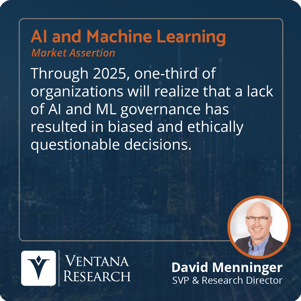Intelligent automation is a powerful tool that can help the CIO and IT leaders optimize business processes and outcomes while reducing costs, risks and errors. Automation takes many forms, each with its own applications, benefits and limitations. In a previous perspective, I shared how technology helps organizations automate processes and enhance workflow efficiency. This perspective explains the various types of automation enabled by artificial intelligence technologies and their applications in different industries and domains. The availability and accessibility of AI technologies play a key role in advancing and enabling new forms of automation and deserves its own time in the spotlight. This perspective also examines the challenges and opportunities AI offers organizations, such as ethical, legal, social implications, data quality and security, talent acquisition and retention and customer satisfaction.
AI has many subfields, such as natural language processing, computer vision and deep learning, which use different techniques and algorithms to enable systems to process, analyze and generate natural language, images or other complex data types. Machine learning is a branch of AI that enables systems to learn from data and experience without programming or rules. It provides intelligent and adaptive approaches that improve over time based on feedback or new data. ML is often used in fraud detection, sentiment analysis, recommendation systems and other tasks or functions that involve identifying patterns, trends, anomalies or insights from large and diverse data sources.
AI can enhance existing forms of automation by adding intelligence, adaptability and personalization. For example, AI can improve interactive voice response systems by using natural language understanding and speech recognition to enable conversational interactions with callers or use sentiment analysis and emotion detection to identify the mood or tone of callers and adjust the responses accordingly. It also improves statistical process control systems by using anomaly detection and predictive analytics to identify potential issues or failures in the process or product before they occur or by using prescriptive analytics to suggest optimal actions or approaches to resolving them. AI also enhances robotic process automation systems by using computer vision and optical character recognition to extract information from unstructured or scanned documents or by using natural language generation and summarization to create reports or summaries from data.
AI can enable new forms of automation by creating autonomous agents, conversational interfaces and generative models. For example, AI enables autonomous agents that perform tasks or functions without human supervision or intervention, such as self-driving vehicle fleets, drones or robots. AI also creates conversational interfaces that interact with users through natural language, such as chatbots, voice assistants or smart speakers.
One of the automation challenges organizations face is that previous techniques have been entirely deterministic — if you didn't plan for a specific situation, you couldn't automate it. Until recently, the tools have required users to think like programmers. This poses an opportunity for AI to overcome these issues by creating generative models that produce new or original content or data, such as images, text or code.
AI creates opportunities and challenges. It can provide organizations with more intelligent, adaptive and personalized forms of automation that manage more complex and diverse tasks or functions as well as provide more  customized and engaging experiences for customers and the workforce. However, organizations must adopt appropriate strategies and practices to ensure that automation approaches are ethical, reliable, secure, scalable and beneficial for all stakeholders. We assert that through 2025, one-third of organizations will realize that a lack of AI and ML governance has resulted in biased and ethically questionable decisions.
customized and engaging experiences for customers and the workforce. However, organizations must adopt appropriate strategies and practices to ensure that automation approaches are ethical, reliable, secure, scalable and beneficial for all stakeholders. We assert that through 2025, one-third of organizations will realize that a lack of AI and ML governance has resulted in biased and ethically questionable decisions.
The evolution of automation has given rise to countless innovative initiatives, such as:
• Combining RPA and machine learning to predict fleet maintenance. In the private sector, a metropolitan city agency reviews vehicle data and service records across diverse systems to determine when to take vehicles out of service and issue repair work orders.
• Using a chatbot to enhance recruiting. In the military, the U.S. Army used a chatbot with NLP to assess thousands of conversations and build a library of questions and responses. Recruiters learned that potential recruits and family members were more comfortable asking the bot questions about military life rather than the human counterpart. Bot interaction also improved recruit satisfaction.
• Deploying generative AI to customize instruction. In education, Duolingo uses a generative model to create personalized and adaptive language learning content. The model produces new sentences and exercises for students based on their proficiency level, preferences and feedback.
These are examples of how organizations incorporate intelligent automation to transform business processes and outcomes. However, automation is not a one-size-fits-all approach. It is constantly evolving and advancing with the development of new technologies and innovations. Organizations must keep up with the latest developments in automation research and development and explore new ways to apply automation to specific business objectives or challenges.
Automation is a powerful tool that helps organizations optimize business processes and outcomes for improved efficiency, and AI plays a key role in its ongoing evolution. AI provides organizations with more advanced and innovative forms of automation to manage more complex and diverse tasks or functions as well as provide more customized and engaging experiences for customers and the workforce. However, organizations need to be aware of AI challenges and identify ways to adopt appropriate strategies to ensure that systems remain reliable and secure.
Regards,
Jeff Orr

 customized and engaging experiences for customers and the workforce. However, organizations must adopt appropriate strategies and practices to ensure that automation approaches are ethical, reliable, secure, scalable and beneficial for all stakeholders. We assert that through 2025, one-third of organizations will realize that a lack of AI and ML governance has resulted in biased and ethically questionable decisions.
customized and engaging experiences for customers and the workforce. However, organizations must adopt appropriate strategies and practices to ensure that automation approaches are ethical, reliable, secure, scalable and beneficial for all stakeholders. We assert that through 2025, one-third of organizations will realize that a lack of AI and ML governance has resulted in biased and ethically questionable decisions.








